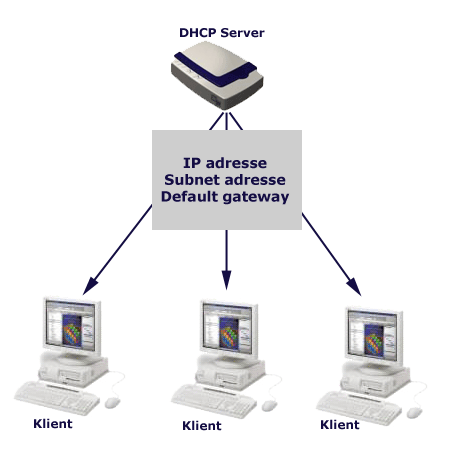| HOME |
| Active directory |
| Ip ports |
| IP |
| DHCP |
| LAN |
| VPN |
| DialUp |
| Ports |
| Web server |
| DNS |
| Sockets |
| X.25 |
| IIS |
| TCPIP |
(Dynamic Host Configuration Protocol) – This
is a protocol that lets network administrators centrally manage and automate
the assignment of IP Addresses on the corporate network. When a company sets
up its computer users with a connection to the Internet , an IP address must
be assigned to each machine. Without DHCP , the IP address must be entered
manually at each computer . DHCP lets a network administrator supervise and
distribute IP addresses from a central point and automatically sends a new
IP address when a computer is plugged into a different place in the
network.DHCP uses the concept of a ‘lease’ or amount of time that a given IP
address will be valid for a computer. Using very short leases, DHCP can
dynamically reconfigure networks in which there are more computers than
there are available IP addresses.
|
Tamara Švaglić |
|
Ivana Grbin |

DHCP's purpose is to enable individual computers on an IP network to extract
their configurations from a server (the 'DHCP server') or servers, in
particular, servers that have no exact information about the individual
computers until they request the information. The overall purpose of this is
to reduce the work necessary to administer a large IP network. The most
significant piece of information distributed in this manner is the IP
address.
DHCP was created by the Dynamic Host Configuration Working Group of the Internet Engineering Task Force (IETF; a volunteer organization which defines protocols for use on the Internet). As such, it's definition is recorded in an Internet RFC and the Internet Activities Board (IAB) is asserting its status as to Internet Standardization. As of this writing (June 1998), DHCP is an Internet Draft Standard Protocol and is Elective. BOOTP is an Internet Draft Standard Protocol and is Recommended. For more information on Internet standardization, see RFC2300 (May 1998)